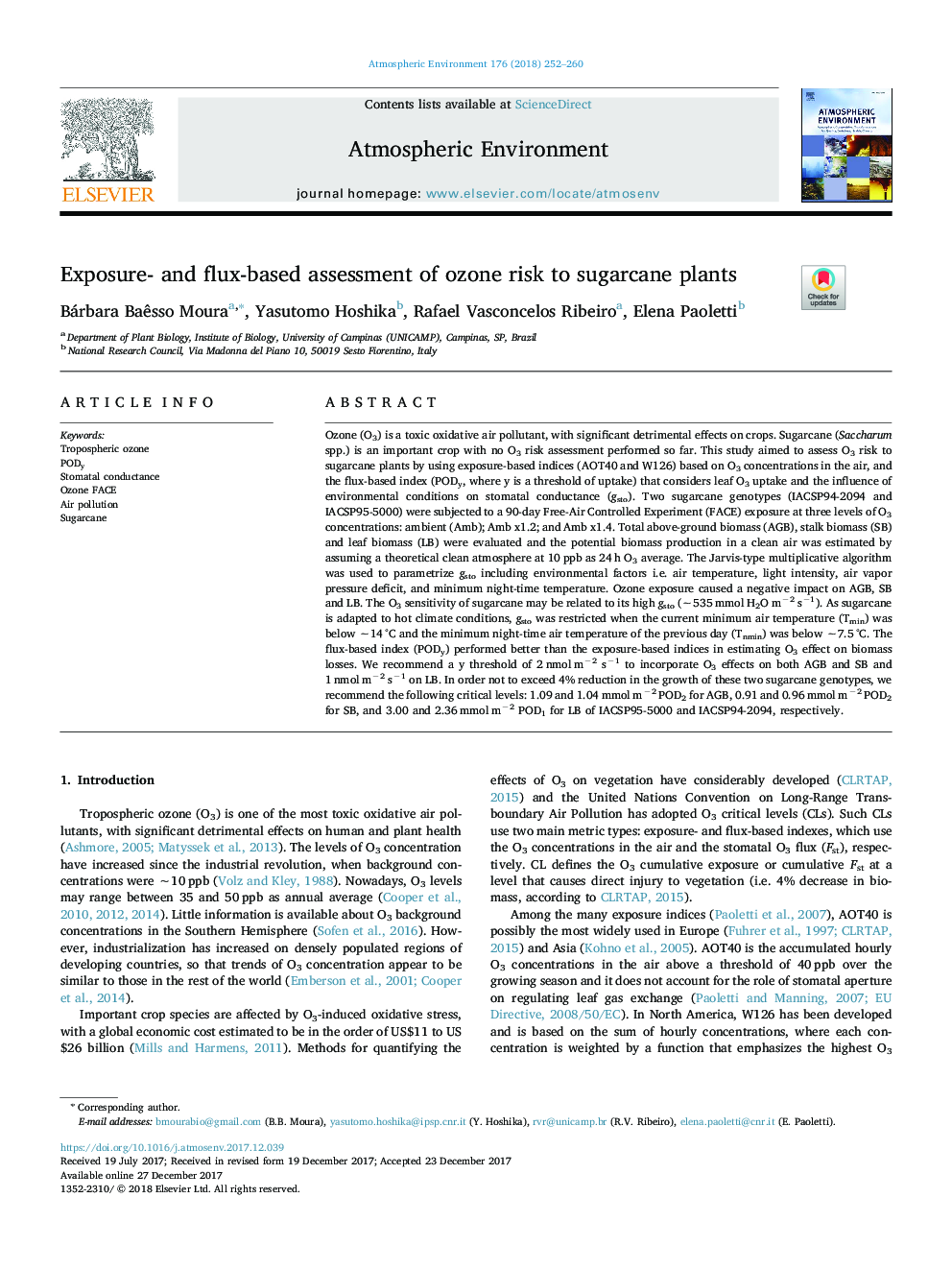| کد مقاله | کد نشریه | سال انتشار | مقاله انگلیسی | نسخه تمام متن |
|---|---|---|---|---|
| 8864145 | 1620298 | 2018 | 9 صفحه PDF | دانلود رایگان |
عنوان انگلیسی مقاله ISI
Exposure- and flux-based assessment of ozone risk to sugarcane plants
ترجمه فارسی عنوان
ارزیابی خطر بروز پوکی استخوان و شیب بر روی گیاهان نیشکر
دانلود مقاله + سفارش ترجمه
دانلود مقاله ISI انگلیسی
رایگان برای ایرانیان
کلمات کلیدی
موضوعات مرتبط
مهندسی و علوم پایه
علوم زمین و سیارات
علم هواشناسی
چکیده انگلیسی
Ozone (O3) is a toxic oxidative air pollutant, with significant detrimental effects on crops. Sugarcane (Saccharum spp.) is an important crop with no O3 risk assessment performed so far. This study aimed to assess O3 risk to sugarcane plants by using exposure-based indices (AOT40 and W126) based on O3 concentrations in the air, and the flux-based index (PODy, where y is a threshold of uptake) that considers leaf O3 uptake and the influence of environmental conditions on stomatal conductance (gsto). Two sugarcane genotypes (IACSP94-2094 and IACSP95-5000) were subjected to a 90-day Free-Air Controlled Experiment (FACE) exposure at three levels of O3 concentrations: ambient (Amb); Amb x1.2; and Amb x1.4. Total above-ground biomass (AGB), stalk biomass (SB) and leaf biomass (LB) were evaluated and the potential biomass production in a clean air was estimated by assuming a theoretical clean atmosphere at 10â¯ppb as 24â¯h O3 average. The Jarvis-type multiplicative algorithm was used to parametrize gsto including environmental factors i.e. air temperature, light intensity, air vapor pressure deficit, and minimum night-time temperature. Ozone exposure caused a negative impact on AGB, SB and LB. The O3 sensitivity of sugarcane may be related to its high gsto (â¼535â¯mmol H2O mâ2â¯sâ1). As sugarcane is adapted to hot climate conditions, gsto was restricted when the current minimum air temperature (Tmin) was below â¼14â¯Â°C and the minimum night-time air temperature of the previous day (Tnmin) was below â¼7.5â¯Â°C. The flux-based index (PODy) performed better than the exposure-based indices in estimating O3 effect on biomass losses. We recommend a y threshold of 2â¯nmolâ¯mâ2 sâ1 to incorporate O3 effects on both AGB and SB and 1â¯nmolâ¯mâ2 sâ1 on LB. In order not to exceed 4% reduction in the growth of these two sugarcane genotypes, we recommend the following critical levels: 1.09 and 1.04â¯mmolâ¯mâ2 POD2 for AGB, 0.91 and 0.96â¯mmolâ¯mâ2 POD2 for SB, and 3.00 and 2.36â¯mmolâ¯mâ2 POD1 for LB of IACSP95-5000 and IACSP94-2094, respectively.
ناشر
Database: Elsevier - ScienceDirect (ساینس دایرکت)
Journal: Atmospheric Environment - Volume 176, March 2018, Pages 252-260
Journal: Atmospheric Environment - Volume 176, March 2018, Pages 252-260
نویسندگان
Bárbara Baêsso Moura, Yasutomo Hoshika, Rafael Vasconcelos Ribeiro, Elena Paoletti,
